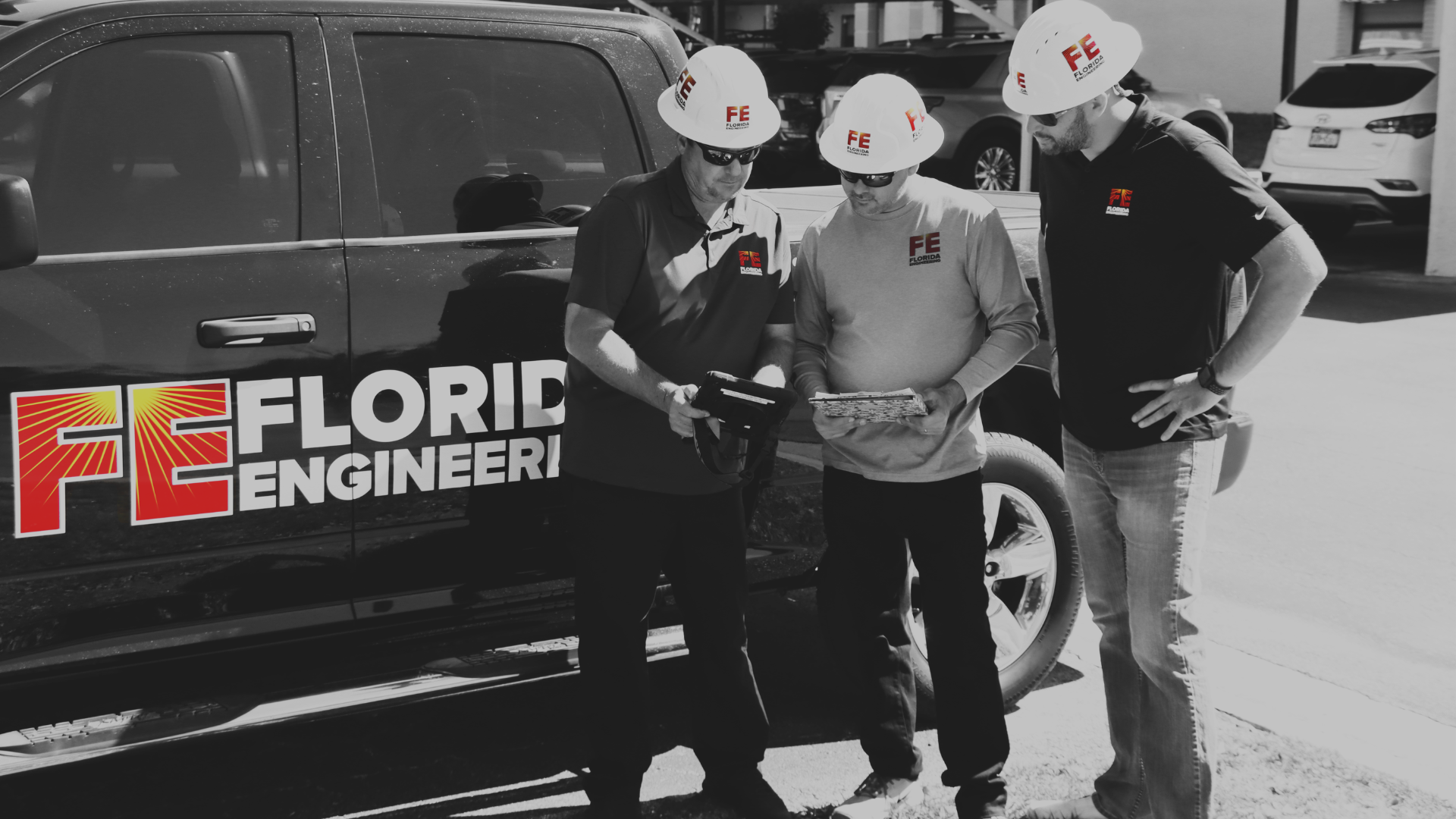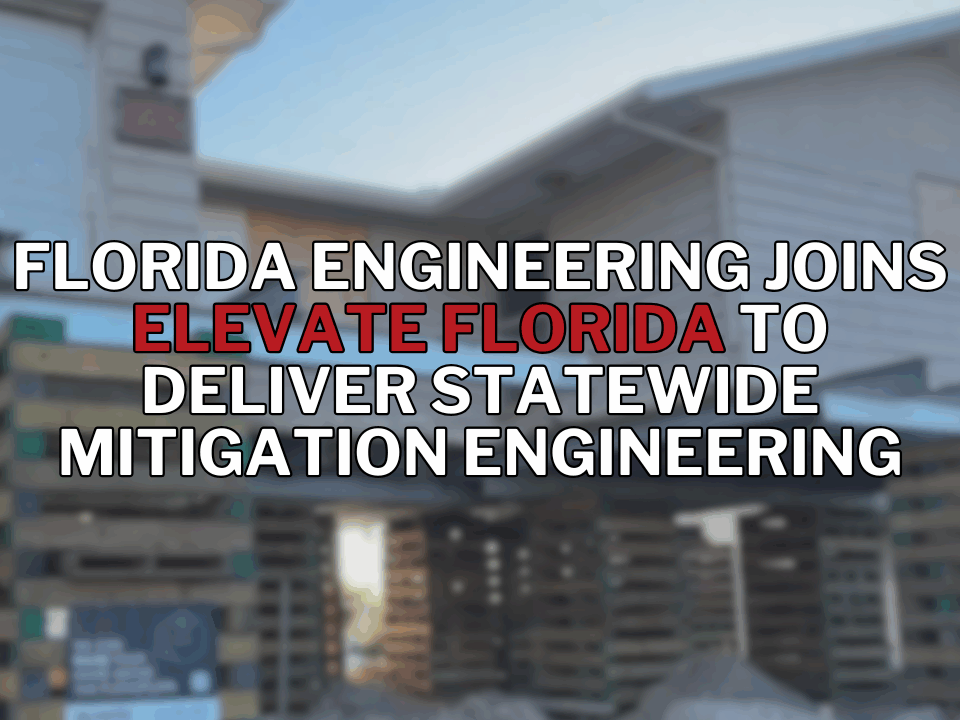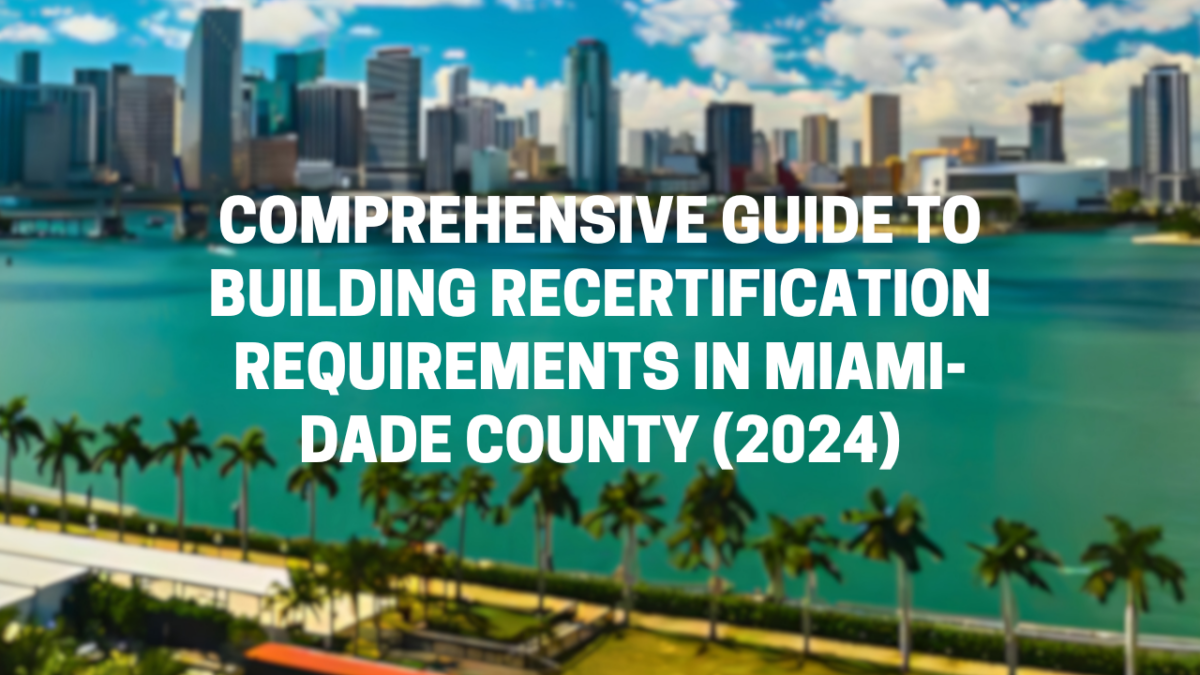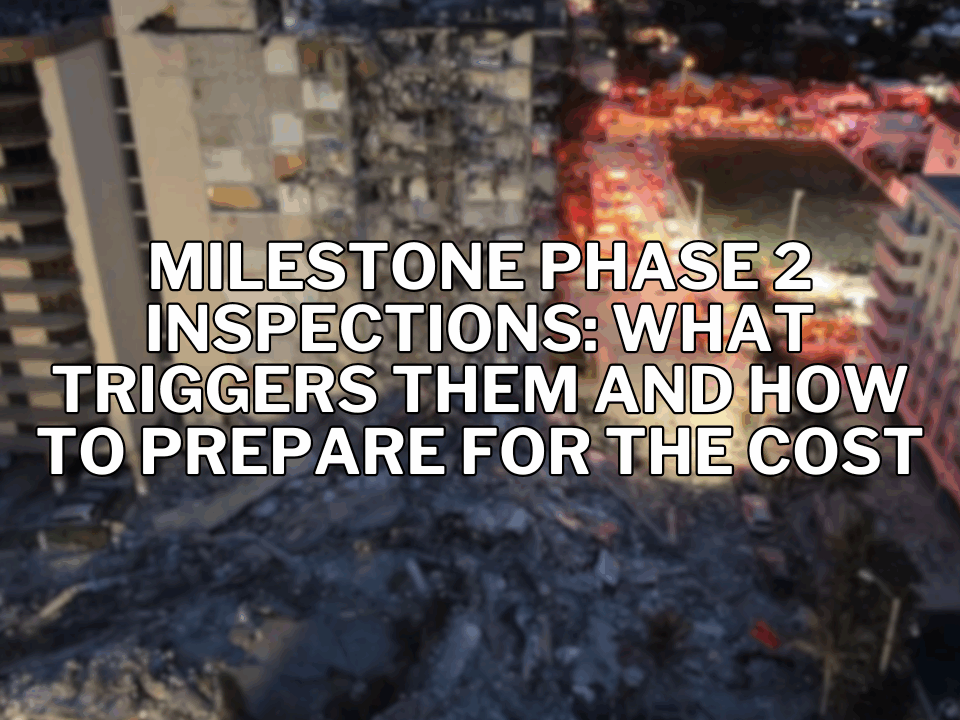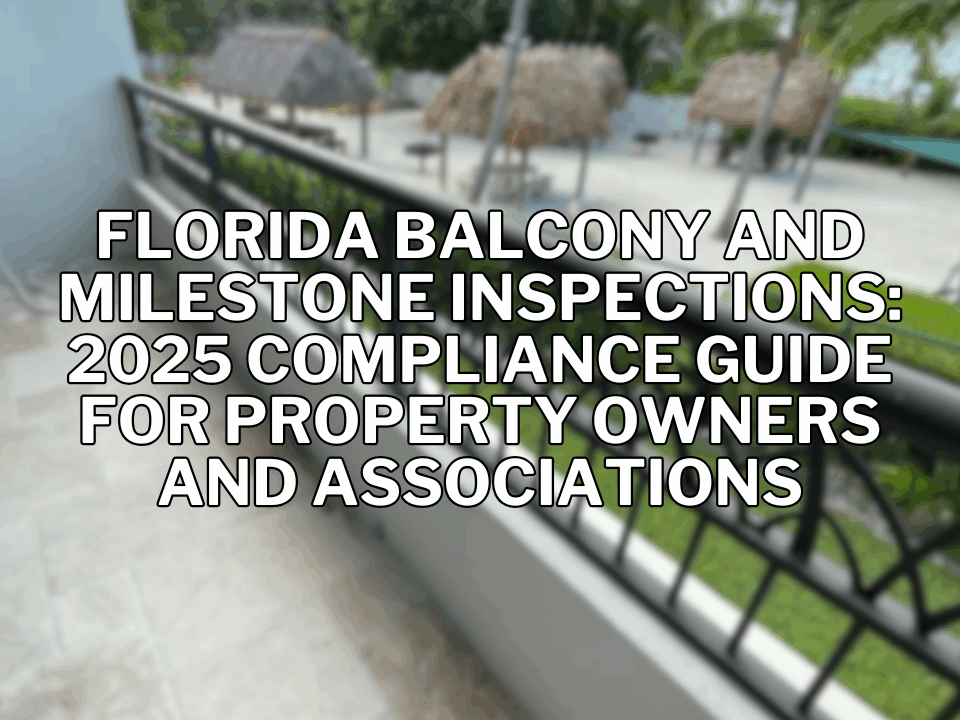As of June 2022, new laws and amended regulations have significantly updated building recertification processes for property owners and design professionals in Miami-Dade County. These changes reflect growing concerns about building safety, especially in the wake of structural failures, and aim to ensure that older buildings meet modern safety standards. This article will cover everything you need to know about the new recertification requirements, the processes involved, and how these updates affect property owners, engineers, and architects.
Table of Contents
- What is Building Recertification?
- Key Changes to the Recertification Law
- Timeline for Building Inspections
- Recertification for Design Professionals
- Building Recertification Inspection Guidelines
- Penalties for Non-Compliance
- Frequently Asked Questions (FAQs)
What is Building Recertification?
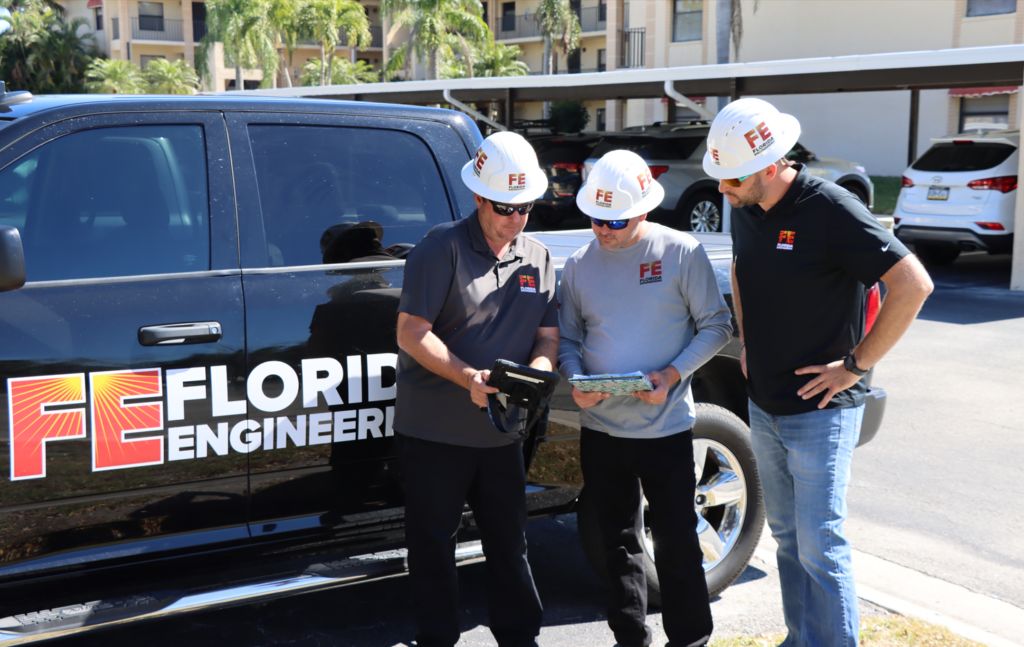
Building recertification is a mandatory process in Miami-Dade County for certain buildings to ensure their structural and electrical safety. This process requires inspections by licensed design professionals—such as structural and electrical engineers—to certify that buildings remain safe for occupancy.
Recertification typically applies to buildings that are three stories or taller and older than 30 years. Inspections must be conducted every 10 years after the initial recertification to continue verifying building safety.
Key Changes to the Recertification Law
The recertification program has undergone significant revisions following a state law that took effect on May 26, 2022. This law introduces “milestone inspections” for condominiums and cooperative association buildings taller than three stories.
Notable changes include:
- Milestone Inspections: These are now required for all condominium and cooperative buildings three stories or taller, starting when the building reaches 25 or 30 years of age, depending on the location and proximity to the coastline.
- New Inspection Guidelines: Inspections now cover more detailed aspects of a building’s structural and electrical components, including foundation, façade, and unpermitted modifications.
- Specific Deadlines: Buildings must adhere to stricter inspection deadlines, with the first milestone inspection due by December 31, 2024 for certain buildings.
Timeline for Building Inspections
Buildings Built Before 1982
- These buildings follow Miami-Dade’s original 40-Year Recertification Program, which remains unchanged.
Buildings Built Between 1983 and 1997
- Coastal Buildings: Three stories or taller within three miles of the coastline must undergo a recertification inspection by December 31, 2024, and every 10 years thereafter.
- Other Buildings: Buildings outside the coastal zone built in this period must also meet the December 31, 2024, deadline and continue inspections every 10 years.
Buildings Built After 1998
- Coastal Buildings: These must complete their first inspection when they reach 25 years of age, then every 10 years.
- Other Buildings: Recertification begins at 30 years of age and continues every 10 years.
Recertification for Design Professionals
The role of licensed professionals—Florida-registered engineers and architects—has expanded significantly under the new guidelines. These experts must ensure that their inspections include the following:
- Comprehensive Façade Inspections: The entire exterior of a building must be examined, including balconies, windows, railings, and any other part that might pose a risk to occupants or the public.
- Infrared Thermography: Required for electrical systems operating at 400 amperes or greater, this inspection technique detects thermal anomalies that could signal electrical problems.
- Document Research: Inspectors are now responsible for researching the building’s permitting history and any unsafe structure cases initiated against it.
Design professionals must use the updated recertification forms starting in January 2024. Proprietary reporting forms will not be accepted.
Building Recertification Inspection Guidelines
The recertification process follows a strict protocol to ensure safety. Key steps include:
- Notification: Property owners receive a Notice of Required Recertification when their building is due for inspection.
- 90-Day Deadline: Owners have 90 days from the notice to submit a detailed recertification report.
- Structural and Electrical Inspections: The report must certify that the building is structurally and electrically safe for occupancy, accompanied by photos and site plans.
- New Components in Reports: Inspections now must cover:
- Foundations
- Top of Building (e.g., parapet walls, chimneys)
- Overloading signs in load-carrying components
- Special features such as seawalls or retaining walls
Owners are also responsible for submitting certifications for parking lot illumination and guardrail standards if applicable.
Penalties for Non-Compliance
Failing to comply with recertification requirements can result in steep penalties:
- A citation will be issued immediately if the property owner fails to obtain certification within the required timeframe.
- An initial fine of $510 can escalate to as much as $10,000 per violation if not addressed promptly.
- Continued non-compliance could result in further enforcement actions, including liens on the property or referral to the Unsafe Structures Unit.
Frequently Asked Questions
What happens if my building fails recertification?
- If the building fails recertification due to safety concerns, repairs must be completed before the building can be recertified. Permits are required for most repairs, and a follow-up inspection will be scheduled.
How do I know if my building requires recertification?
- Property owners receive a notice from Miami-Dade County. If your property falls under the unincorporated areas of the county, you can check the status of your building’s recertification on the Recertification Portal.
Can I request an extension for recertification?
- Yes, extensions of up to 60 days can be requested by submitting a written request from a licensed engineer or architect. The request must include a statement that the building remains safe for occupancy during the recertification process.
Where can I submit recertification reports?
- Reports can be submitted electronically via the Recertification Upload Portal, mailed, or delivered in person at the Miami-Dade County Permitting and Inspection Center.
Final Thoughts
Building recertification in Miami-Dade County has become more stringent following the implementation of the new state law in May 2022. Property owners and design professionals must ensure compliance with these new regulations, as failure to do so can result in significant penalties. By understanding the updated requirements and proactively engaging in the recertification process, building owners can help maintain the safety and integrity of their properties for years to come.
For more details on the specific forms, guidelines, or any aspect of the recertification process, visit the Miami-Dade County Building Recertification Portal or contact the Recertification Unit at 786-315-2424.
Need help? Contact Florida Engineering LLC to guide you through the process. Our team of experts can help you navigate your specific obligations and prepare for your building inspections with confidence. Don’t wait—start preparing today!
Contact Us – The Milestone Experts Near Me – Florida’s Condominium Inspections
- Phone: 941-391-5980
- Email: contact@fleng.com
- Address: 4161 Tamiami Trail, Suite 101, Port Charlotte, FL 33952
Connect With Us
Related Services
- Milestone Inspections
- Energy Calculation Services
- 25,30,40,50,60 Year Recertifications
- Pool Engineering Services
- Turnover Inspections
[This above text is for information purposes only and does not constitute engineering or legal advice. Please consult a professional engineer and licensed attorney for any specific answers to your questions about Milestone Inspections and the legal obligations milestone inspections entail.]

